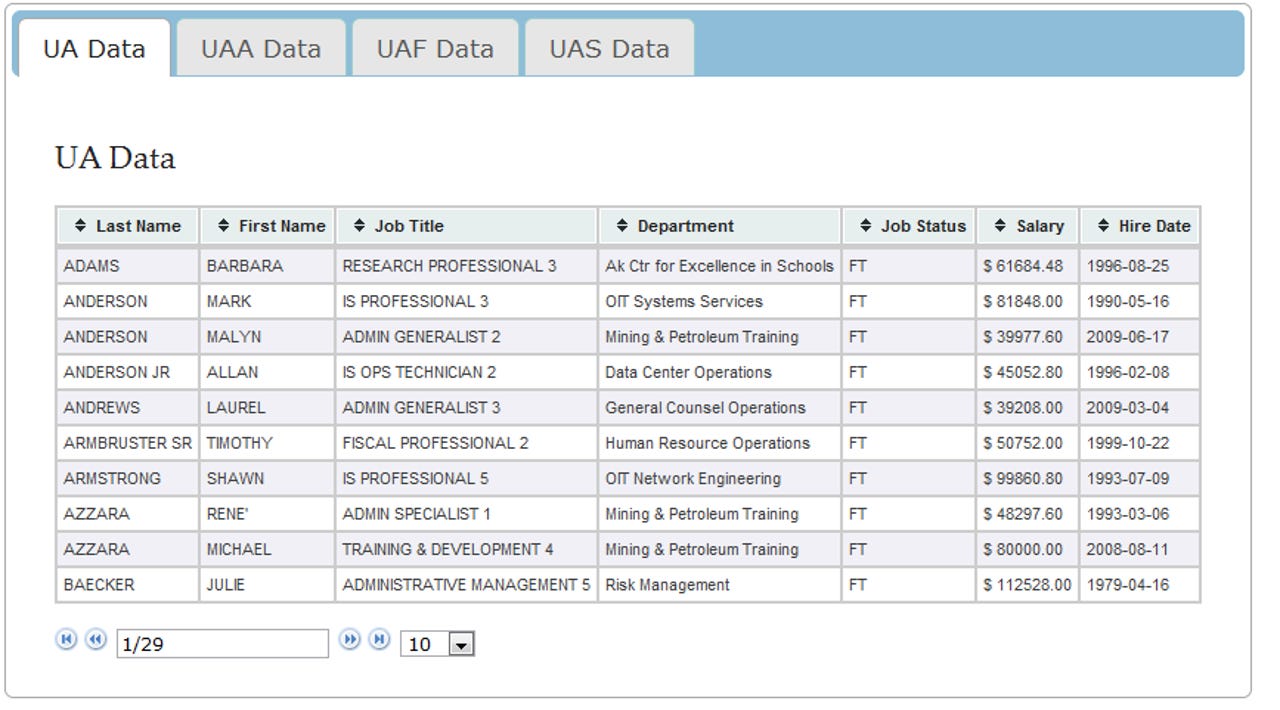Students launch university employee salary database

Students at the University of Alaska have launched a public database which contains the university's employee salary records.
The salary database was designed in order to extend transparency of campus expenditure, especially within a time where students are feeling the pressure of rising tuition fees and living costs.

The system is the brainchild of the student team at the Sun Star student newspaper, published at the University of Alaska Fairbanks. It is a publicly accessible tool that contains the base salaries of all employees at the university in 2011. The Sun Star's faculty advisor is Lynne Lott, an assistant professor in the UAF Journalism Department.
The student newspaper is funded by both advertising revenue and by a small share of student fees.
According to the University of Alaska's Human Resources department, the information is current up to April 2011. The collation and input of data took the students approximately eight months to complete, and required them to sift through over 6000 public documents given to them by the university.
The data is searchable in two main ways -- by an employee's name, or by group functions. If you choose a group search then you can pick additional fields such as job title, department and salary range -- from $0 to $300,000.
The data includes:
- MAU (Major Administrative Unit -- UAF, UAA, UAS and UA)
- Employee name
- Title
- Department
- Base Salary
- Initial Hire Date
There are several bugs in the system, for example, names with an apostrophe are currently unsearchable and results are not being returned for salaries over $300,000 -- these are currently being corrected. The database not include overtime, holiday pay, benefits or expenses information, so the 'true' remuneration of a staff member is not necessarily available.
There has been criticism of the project, including the suggestion that creation of a published list of employee salaries could become a root cause for friction in the workplace. Also, few people would necessarily want their earnings posted online in the public eye. Due to factors that are not included, such as overtime and expenses, figures input in to the system may also be misleading.
In light of increasing tuition fees, the students wanted to ensure that knowledge was available in terms of where the additional revenue is going. UA fees have doubled since 2001, and a 7 percent increase is planned for undergraduates in the next academic year.
For universities that receive their income via public revenue and paying students, the debate still continues as to whether any business that receives governmental assistance should then be required to reveal their expenditure details.
Over the coming months, the Alaskan students plan to run a series of features in the student newspaper concerning the data they have collated and where money is spent running the university.
For more information, view the infographic below created by the Sun Star staff:
Image credit: UAF
Related: